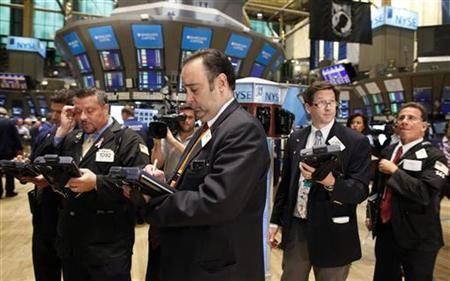Micro-Cap Investing: Tiny Companies, Huge Potential Returns

Micro-cap stocks occupy an unusual niche in equity investing.
There are literally thousands of them in the U.S. alone and they are almost completely ignored by Wall Street – which means they have little or no public recognition, they are largely blocked from debt and capital markets and suffer from stifled liquidity.
So why would any investors choose to put money in tiny companies that no one ever heard of and which are often on the verge of bankruptcy?
Because they offer superior long-term performance.
Over the past ten years through May 31, 2011, the Russell Microcap Index delivered an average annualized return of 7.5 percent, versus a 3.6 percent for the large-cap Russell 3000 Index.
The Russell Microcap Index basically comprises the 1000 smallest stocks in the better-known small-cap Russell 2000 Index. The median market cap in the Micro Cap index is only $184-million, while the largest individual component has a market cap size of about $1.5-billion.
Most financial professionals regard a micro-cap company as one with a market cap size of $500-million or below, although this is not a concrete rule. In fact, there are investible stocks in this arena which are as small as $100-million or even $50-million.
However, micro-cap investing is fraught with risk and they aren’t meant for everyone.
“Smaller stocks, especially micro-caps are highly volatile because they are thinly traded, typically trade at lower prices and have little liquidity, meaning they don’t trade much,” said Dave Lavigne, senior analyst and co-chairman of Accredited Members, in Denver, Colo., which specializes in micro-cap investing.
Still, Lavigne points out that during a market bull run, micro-caps tend to outperform the broader market (sometimes by a very wide margin). This makes micro-caps extremely attractive to investors who want big returns and aren’t afraid of some risk and volatility.
“During a strong period for the stock market, the larger-cap stocks tend to lead the market and that, in turn, increased liquidity,” Lavigne said. “This liquidity trickles down to smaller companies. More liquidity creates a very favorable environment for micro-caps, and their performance accelerates.”
The flipside of this argument is that when the broader market is weak, liquidity dries up and micro-caps suffer big losses.
Still, Lavigne counters that not all the stereotypes about micro-caps are necessarily true. For example, he said there are many micro-cap firms which have lasted for decades and provide steady, stable growth. Some even pay dividends.
As for the question of micro-caps being prone to bankruptcy, Lavigne notes that during the 2007-2008 financial crisis, a number of very larger companies across many industries and sectors went bankrupt.
“And if it wasn’t for an extraordinary intervention by the federal government, the number of bankruptcies of prominent companies would’ve been even higher,” he added.
The top couple of performers in the Russell Microcap Index have all soared more than 100 percent over the past year,
Capital Trust Inc. (NYSE: CT) is a real estate investment trust that focuses on originating and managing credit sensitive structured financial products. With a market cap of less than $80-million, the stock has skyrocketed 120 percent in the past twelve months.
Another big performer Horizon Lines Inc. (NYSE: HRZ) is an shipping and integrated logistics services firm. With a market cap of about $600-million, its share price had jumped 108 percent in the past year.
Micro-caps also make attractive takeover candidates for bigger companies, often at significant premiums.
For example, earlier this year, the giant drugstore chain Walgreen (NYSE: WAG) acquired online pharmacy Drugstore.com in a transaction valued at about $429-million. The deal valued Drugstore.com shares at $3.80 per share (a 113 percent premium over the shares value on the day prior to the announcement of the merger).
© Copyright IBTimes 2025. All rights reserved.





















